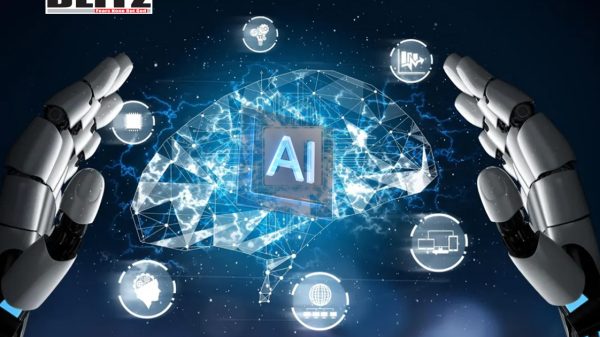Maximizing the potential of the AI revolution
- Update Time : Saturday, January 18, 2025

The rapid evolution of artificial intelligence (AI), particularly generative AI, has sparked a spirited debate among economists and technologists regarding its implications for productivity growth and employment. While some voices predict moderate productivity gains coupled with significant job displacement, a closer examination of recent data and studies paints a more optimistic picture. AI has the potential to drive unprecedented growth and innovation, provided that policymakers and businesses implement strategies to address its challenges and harness its benefits.
AI’s impact on productivity can be understood through two distinct pathways: its ability to automate tasks in the production of goods and services, and its potential to revolutionize the creation of new ideas. Studies have begun to reveal the transformative effects of generative AI on individual productivity. For instance, Erik Brynjolfsson and his colleagues observed that customer service agents at a US software firm experienced a productivity increase of nearly 14% in the first month of using an AI assistant. Over the next three months, this stabilized at a level approximately 25% higher than their original productivity.
Another study mirrored these findings, highlighting substantial productivity gains across a diverse group of knowledge workers. Interestingly, the largest initial improvements were observed among lower-productivity workers, suggesting that AI could play a role in reducing inequality within firms.
Moving beyond individual-level gains, macroeconomic analyses have begun to quantify AI’s broader potential. In a 2024 paper, economists Philippe Aghion and Céline Bunel explored two methodologies to estimate AI’s impact on productivity growth over the next decade. The first approach drew parallels between AI and historical technological revolutions, while the second applied Daron Acemoglu’s task-based framework, augmented by recent empirical data.
Using the first method, they projected an annual increase in aggregate productivity growth of 0.8 to 1.3 percentage points. The second approach yielded a median estimate of 0.68 percentage points, significantly higher than Acemoglu’s own projection of 0.07 percentage points. Importantly, these estimates are likely conservative, as they do not fully account for AI’s potential to automate the production of ideas-an area with transformative implications for research and innovation.
However, these optimistic projections come with caveats. The lack of competition in critical segments of the AI value chain poses a potential obstacle to growth. Dominated by a handful of “superstar” firms, the AI sector risks becoming a bottleneck that stifles innovation and limits the democratization of AI’s benefits.
Contrary to widespread fears that AI will lead to mass unemployment, recent studies suggest a more nuanced impact on the labor market. In a study of French firms conducted between 2018 and 2020, researchers found that AI adoption was associated with increased employment and sales at the firm level. These findings align with broader research indicating that automation often boosts labor demand by enabling firms to expand their business scope and improve efficiency.
For occupations traditionally considered vulnerable to automation-such as accounting, telemarketing, and secretarial work-the impact of AI adoption was found to be surprisingly positive. While certain applications of AI, such as those in digital security, tend to drive significant employment growth, others, like administrative automation, may have small negative effects. These differences underscore the importance of how AI is deployed, rather than the inherent vulnerability of specific job categories.
One significant risk, however, is that workers displaced by AI-driven competitors may struggle to find new opportunities, especially if they lack access to reskilling programs. Yet, slowing AI adoption to protect jobs may be counterproductive. In an increasingly globalized economy, firms that hesitate to integrate AI will find themselves at a competitive disadvantage against international rivals that do.
Realizing AI’s potential to drive both productivity and employment will require thoughtful and proactive policy interventions. The dominance of superstar firms in the AI value chain raises concerns about market concentration and reduced innovation. To counter this, competition policy must prioritize creating an environment that fosters new entrants and ensures fair access to resources like data and computing power.
Encouraging AI adoption among smaller firms is critical for avoiding entrenched market power. A combination of competition policy and industrial policy can help level the playing field. For example, subsidies or grants for small and medium-sized enterprises (SMEs) could enable them to access the expensive infrastructure needed to implement AI solutions.
Education and workforce training will also play a pivotal role in mitigating AI’s potential downsides. Broad-based access to high-quality education, coupled with targeted training programs, can equip workers with the skills they need to thrive in an AI-driven economy. Active labor market policies, such as job placement services and wage subsidies for reskilled workers, can further ease transitions for those displaced by automation.
One of the most exciting prospects of AI is its ability to revolutionize the production of ideas. By automating routine and repetitive tasks, AI frees up human creativity and intellectual capacity for higher-order problem-solving. This could lead to breakthroughs in fields ranging from medicine and renewable energy to materials science and beyond.
For instance, AI algorithms are already being used to accelerate drug discovery, identify new materials with desirable properties, and optimize supply chains. As AI continues to evolve, its ability to generate, test, and refine ideas could usher in a new era of innovation, driving economic growth and improving quality of life across the globe.
The AI revolution is not without its challenges, but its potential to transform productivity and employment is too significant to ignore. Countries that embrace AI and adapt to its demands will be well-positioned to lead in the global economy, while those that resist may find themselves falling behind.
To maximize the benefits of AI, policymakers must focus on fostering competition, ensuring equitable access to resources, and investing in education and training. Businesses, for their part, should adopt AI strategically, balancing short-term efficiency gains with long-term innovation.
Ultimately, the success of the AI revolution will depend on our collective ability to adapt and innovate. With the right policies and a forward-looking mindset, AI can become a powerful engine of growth and opportunity for generations to come.
















Leave a Reply